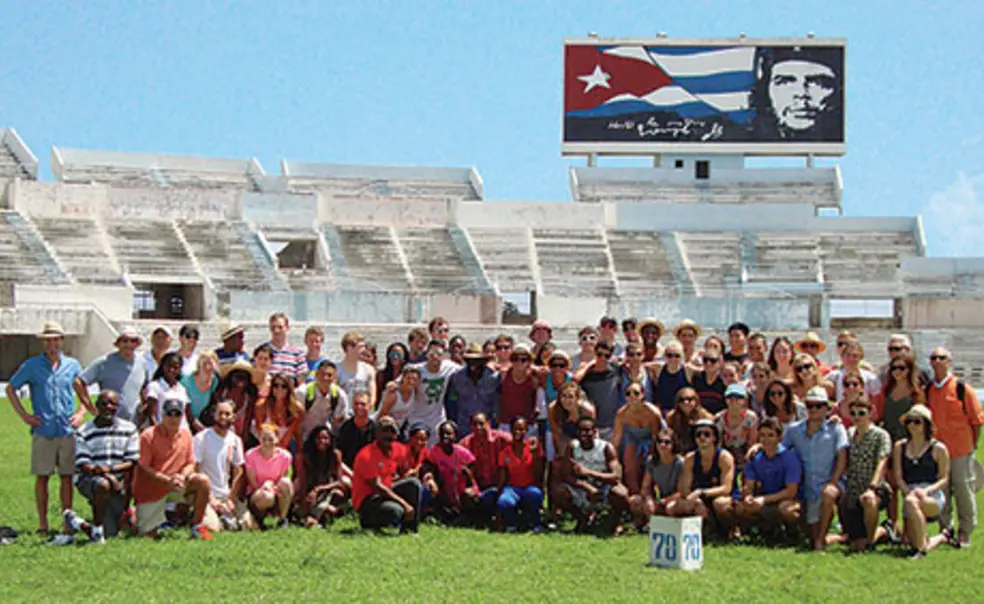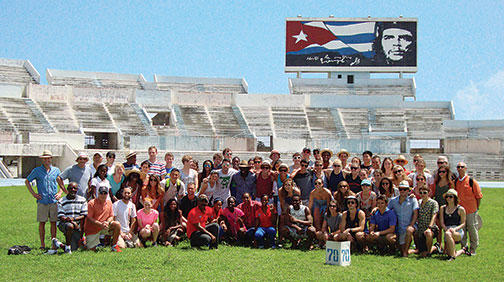Track and Field: Visiting Cuba, Princeton Athletes View a Nation in Transition
The August reopening of the U.S. embassy in Havana signaled a new era in American diplomatic relations with Cuba. Two months earlier, Princeton track and field athletes made their own goodwill visit to the island, a nine-day trip that included two exhibition meets and several opportunities for cultural exchange.
The tour, more than a year in the making, included 77 students, coaches, and staff. Men’s coach Fred Samara and women’s coach Peter Farrell worked with Global Exchange, an organization that specializes in “people-to-people” travel. They also received valuable advice from Dean of Religious Life Alison Boden and Professor Stan Katz, both of whom have traveled to Cuba multiple times.
Samara said that the trip was different from previous team visits to China and Greece. “There was quite a bit of meeting the local people, and particularly the local young people,” he said.
For co-captain Cecilia Barowski ’16, the highlights of the trip were visits to neighborhoods, including one that hosted a block party and potluck dinner for the Princeton travelers. Most of the Cubans they met chatted about everyday life; few mentioned politics or the role of the government.
At the first exhibition meet, Barowski bonded with a former Cuban national-team sprinter, Nelkis Casabona. Though they came from different backgrounds and are at different stages in their careers — Casabona, a 2012 Olympian, has retired from international competition, while Barowski hopes to begin running professionally after college — they shared “the same kind of commitment and the same drive,” she said.
Seeing the amount of tourism and new construction in Havana, the Princeton group realized that it was watching what could be a transformational period for Cuba. In five years, the country may look quite different. “It’s a once-in-a-lifetime trip,” Barowski said.












No responses yet